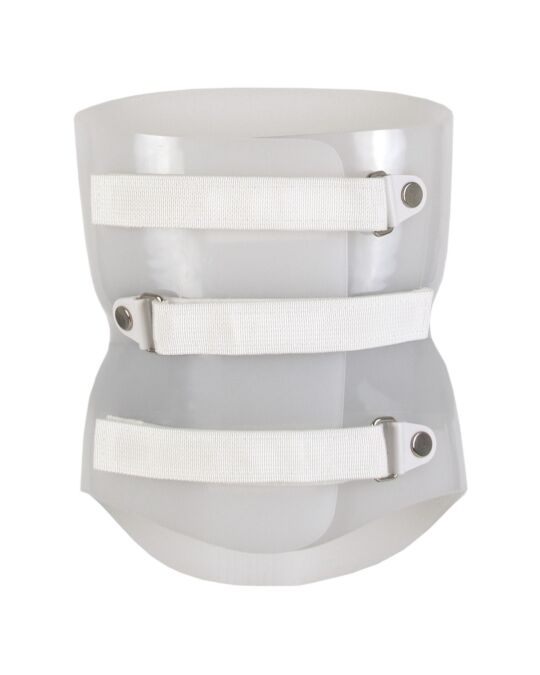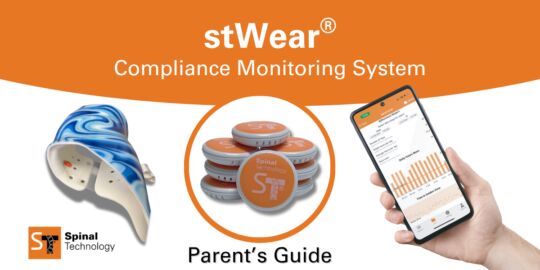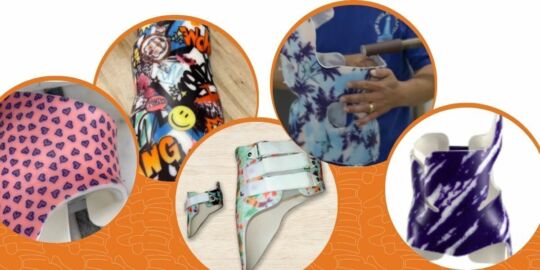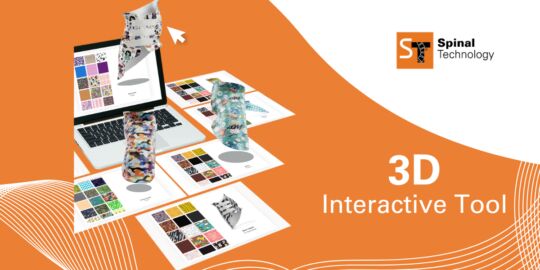LSO- Anterior Opening Wearing Instructions
Your custom-made LSO spinal orthosis with an anterior overlap opening, is designed to provide you with secure, comfortable upper body support. The information below, along with the specific guidance from your orthotist, and/or physician, will tell you what to expect when using your spinal orthosis.
Follow your health care providers’ instructions carefully to use this device safely and effectively; this document is designed to give you general “getting started” instructions. Please take the time to read this information carefully. Always contact your orthotist if you have any questions.
Putting on your orthosis
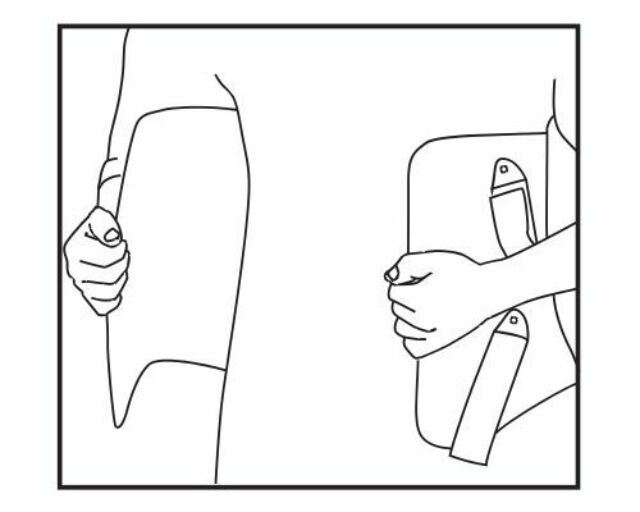
1. Before donning the orthosis make sure to wear a tight-fitting cotton T-Shirt or stockinette. The material should be smooth; wrinkles under the orthosis can cause irritation or skin breakdown.
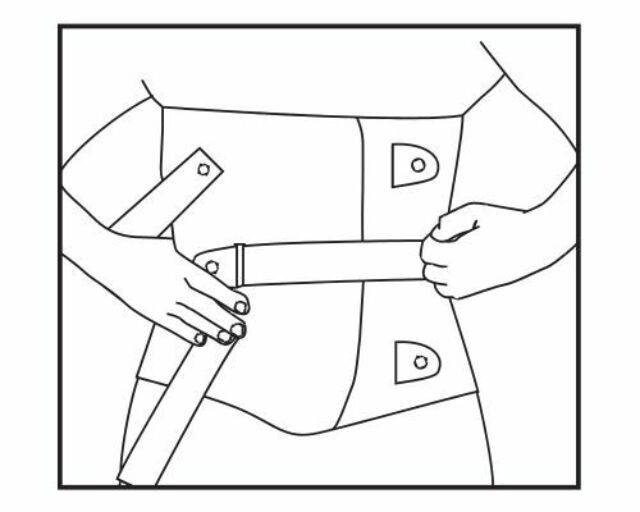
2. First identify top and bottom of the brace. Bottom of orthosis should be slightly contoured where brace fits over hips. While standing, wrap orthosis around waist, and align waist indentation. Feed straps through loops and attach loosely.
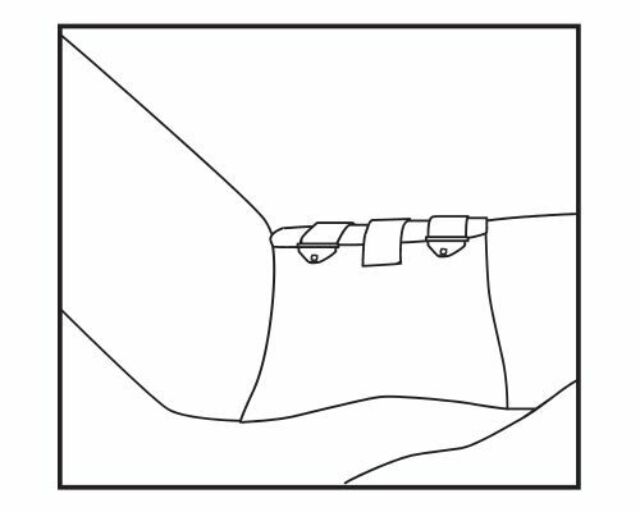
3. Lie down on bed, flex hips slightly by bending at the knees.
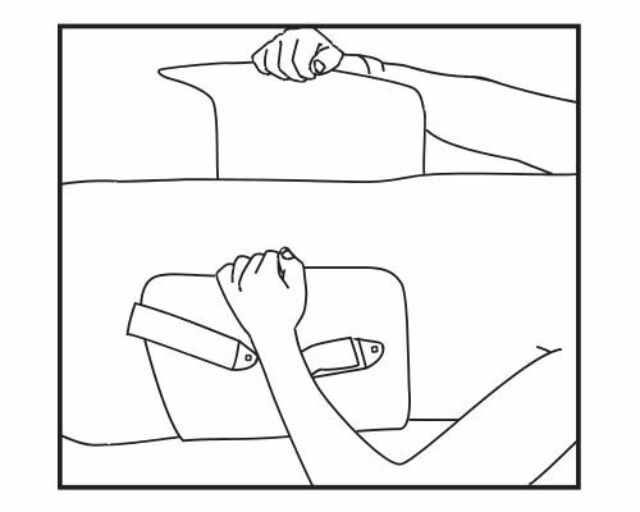
4. While lying down, loosen straps, and align orthosis with waist indentation between hip and ribs.
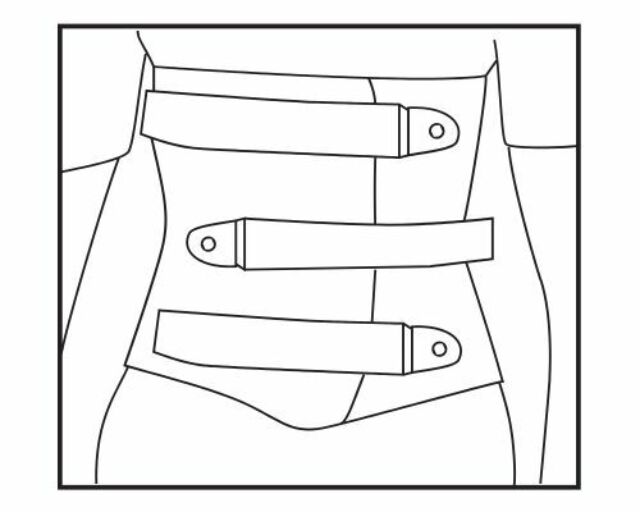
5. Once the orthosis is positioned properly, tighten straps starting with middle and then alternate between top and bottom straps. Tighten straps as needed.
Positioning Your Spinal Brace
Use the waist indentations on the spinal orthosis to position your brace. The waist should rest between the top of your hipbone and your lowest rib (waist). Be sure the waist on each side of the brace is properly located and the orthosis is centered at your midline.
Proper Strap Tension
Straps should be tightened so they are comfortably snug. The object is to eliminate excess motion between your body and the orthosis, but NOT to overtighten the straps. Look for pre-marked lines your orthotist may have made on the straps for quick reference.
Jacket Migration
Most spinal braces have a tendency to migrate upward. A slight change in the location of the spinal brace is expected when you sit up after having been lying down. Be sure the straps on the orthosis are secured firmly enough to avoid migration.
Comfort Tips
Always wear your spinal brace over a cotton T-shirt that provides coverage in all of the contact areas of the brace. Try to keep the fabric smooth against skin and avoid fabric wrinkles or bunching. If necessary, change your T-shirt halfway through the day to increase your comfort.
Areas of Redness
Some minor surface redness is common and should dissipate quickly. Check for localized redness after each wearing period and before continuing with the break-in schedule. If redness, irritation persists call your orthotist for adjustments.
Adjustments
Adjustments for fit and function can be made by appointment.
Follow-up care and Emergencies
Follow-up visits with your Physician and Orthotist are vital for your healing – don’t skip any scheduled appointments. Adjustments for fit and function can be made by appointment with your orthotist.
